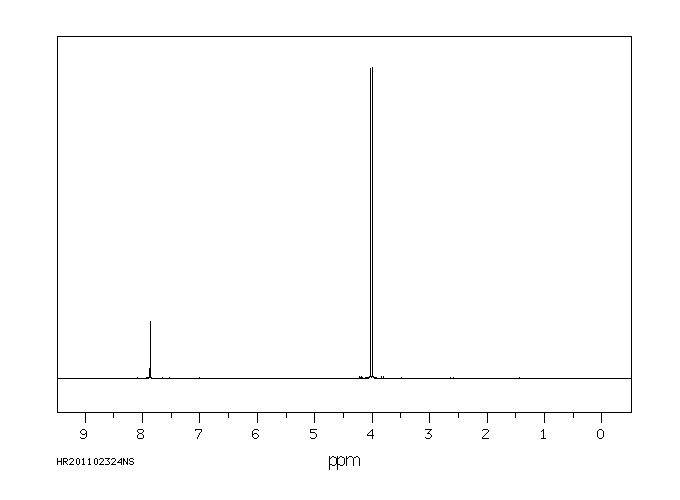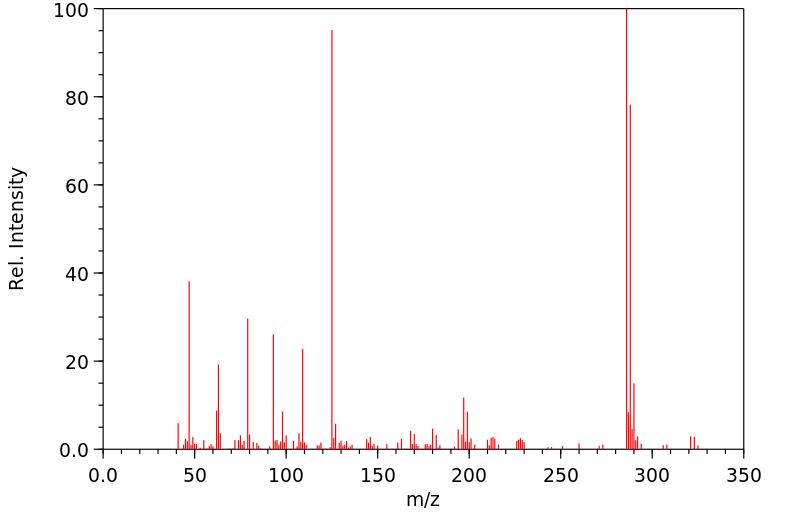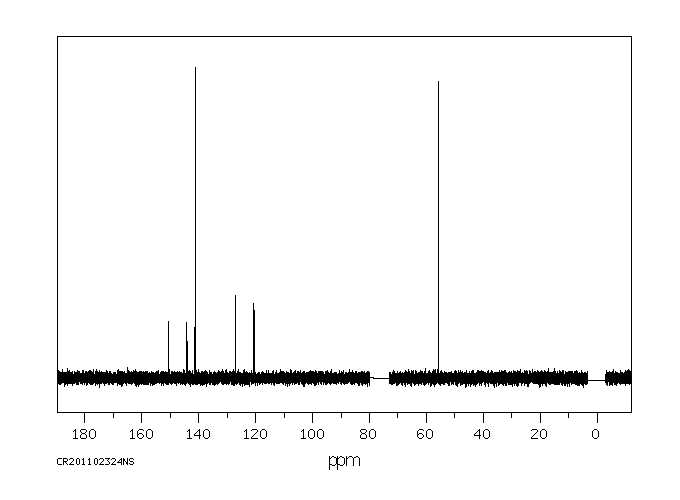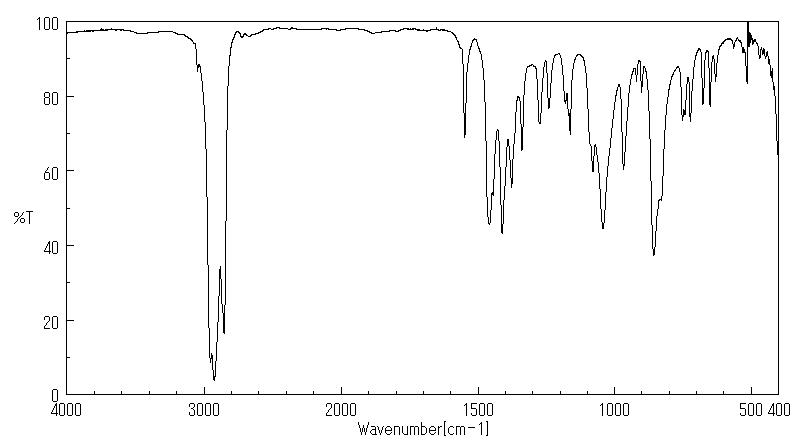甲基毒死蜱 | 5598-13-0
-
物化性质
-
计算性质
-
ADMET
-
安全信息
-
SDS
-
制备方法与用途
-
上下游信息
-
文献信息
-
表征谱图
-
同类化合物
-
相关功能分类
-
相关结构分类
物化性质
-
熔点:45.5-46.5°C
-
沸点:347.3±52.0 °C(Predicted)
-
密度:1.64 g/cm3(Temp: 23 °C)
-
闪点:>100 °C
-
溶解度:氯仿:微溶
-
物理描述:Chlorpyrifos methyl appears as colorless crystals. Corrosive to copper, brass, iron, and tin plate. Used as an insecticide.
-
颜色/状态:White crystals
-
气味:Slight mercaptan
-
蒸汽压力:3 mPa (2.25X10-5 mm Hg) at 25 °C
-
稳定性/保质期:
-
分解:When heated to decomposition it emits very toxic fumes of /hydrogen chloride, nitrogen oxides, phosphorus oxides, & sodium oxides/.
-
碰撞截面:153.14 Ų [M+H]+; 161.39 Ų [M+Na]+
-
保留指数:1820;1820;1829;1866;1845.7;1863.6;1824;1902;1840;1860;1855.5
计算性质
-
辛醇/水分配系数(LogP):4.3
-
重原子数:16
-
可旋转键数:4
-
环数:1.0
-
sp3杂化的碳原子比例:0.285
-
拓扑面积:72.7
-
氢给体数:0
-
氢受体数:5
ADMET
安全信息
-
危险品标志:Xi,N
-
安全说明:S16,S26,S36,S36/37,S60,S61
-
危险类别码:R50/53,R43
-
WGK Germany:2
-
海关编码:2933399026
-
危险品运输编号:UN 3077
-
RTECS号:TG0700000
-
储存条件:避光,存放在阴凉干燥处,并密封保存。
SDS
: 甲基毒死蜱
产品名称
1.2 鉴别的其他方法
无数据资料
1.3 有关的确定了的物质或混合物的用途和建议不适合的用途
仅供科研用途,不作为药物、家庭备用药或其它用途。
模块 2. 危险性概述
2.1 GHS分类
急性毒性, 经口 (类别4)
急性毒性, 吸入 (类别3)
急性毒性, 经皮 (类别5)
皮肤刺激 (类别3)
呼吸敏化作用 (类别1)
急性水生毒性 (类别1)
慢性水生毒性 (类别1)
2.2 GHS 标记要素,包括预防性的陈述
象形图
警示词 危险
危险申明
H302 吞咽有害。
H313 接触皮肤可能有害。
H316 造成轻微皮肤刺激。
H331 吸入会中毒。
H334 吸入可能导致过敏或哮喘病症状或呼吸困难。
H410 对水生生物毒性极大并具有长期持续影响.
警告申明
预防
P261 避免吸入粉尘/烟/气体/烟雾/蒸气/喷雾.
P264 操作后彻底清洁皮肤。
P270 使用本产品时不要进食、饮水或吸烟。
P271 只能在室外或通风良好之处使用。
P273 避免释放到环境中。
P285 如通风不足,须戴呼吸防护面罩。
措施
P304 + P340 如吸入,将患者移至新鲜空气处并保持呼吸顺畅的姿势休息.
P311 呼救解毒中心或医生。
P321 具体治疗(见本标签上提供的急救指导)。
P330 漱口。
P332 + P313 如发生皮肤刺激:求医/ 就诊。
P391 收集溢出物。
储存
P403 + P233 存放于通风良的地方。 保持容器密闭。
P405 存放处须加锁。
处理
P501 将内容物/ 容器处理到得到批准的废物处理厂。
2.3 其它危害物 - 无
模块 3. 成分/组成信息
3.1 物 质
: C7H7Cl3NO3PS
分子式
: 322.53 g/mol
分子量
组分 浓度或浓度范围
ChlorpyrifOS-methyl
-
CAS 号 5598-13-0
EC-编号 227-011-5
索引编号 015-186-00-9
模块 4. 急救措施
4.1 必要的急救措施描述
一般的建议
请教医生。 出示此安全技术说明书给到现场的医生看。
吸入
如果吸入,请将患者移到新鲜空气处。 如果停止了呼吸,给于人工呼吸。 请教医生。
皮肤接触
用肥皂和大量的水冲洗。 立即将患者送往医院。 请教医生。
眼睛接触
用水冲洗眼睛作为预防措施。
食入
切勿给失去知觉者从嘴里喂食任何东西。 用水漱口。 请教医生。
4.2 主要症状和影响,急性和迟发效应
4.3 及时的医疗处理和所需的特殊处理的说明和指示
无数据资料
模块 5. 消防措施
5.1 灭火介质
灭火方法及灭火剂
用水雾,耐醇泡沫,干粉或二氧化碳灭火。
5.2 源于此物质或混合物的特别的危害
碳氧化物, 氮氧化物, 氯化氢气体, 磷氧化物, 硫氧化物
碳氧化物, 氮氧化物, 硫氧化物, 磷的氧化物, 氯化氢气体
5.3 给消防员的建议
如必要的话,戴自给式呼吸器去救火。
5.4 进一步信息
无数据资料
模块 6. 泄露应急处理
6.1 人员的预防,防护设备和紧急处理程序
戴呼吸罩。 防止粉尘的生成。 防止吸入蒸汽、气雾或气体。 保证充分的通风。 将人员撤离到安全区域。
避免吸入粉尘。
6.2 环境保护措施
在确保安全的前提下,采取措施防止进一步的泄漏或溢出。 不要让产物进入下水道。
防止排放到周围环境中。
6.3 抑制和清除溢出物的方法和材料
收集、处理泄漏物,不要产生灰尘。 扫掉和铲掉。 存放进适当的闭口容器中待处理。
6.4 参考其他部分
丢弃处理请参阅第13节。
模块 7. 操作处置与储存
7.1 安全操作的注意事项
避免接触皮肤和眼睛。 防止粉尘和气溶胶生成。
在有粉尘生成的地方,提供合适的排风设备。
7.2 安全储存的条件,包括任何不兼容性
贮存在阴凉处。 容器保持紧闭,储存在干燥通风处。
建议的贮存温度: 2 - 8 °C
7.3 特定用途
无数据资料
模块 8. 接触控制和个体防护
8.1 容许浓度
最高容许浓度
没有已知的国家规定的暴露极限。
8.2 暴露控制
适当的技术控制
避免与皮肤、眼睛和衣服接触。 休息以前和操作过此产品之后立即洗手。
个体防护设备
眼/面保护
面罩與安全眼鏡请使用经官方标准如NIOSH (美国) 或 EN 166(欧盟) 检测与批准的设备防护眼部。
皮肤保护
戴手套取 手套在使用前必须受检查。
请使用合适的方法脱除手套(不要接触手套外部表面),避免任何皮肤部位接触此产品.
使用后请将被污染过的手套根据相关法律法规和有效的实验室规章程序谨慎处理. 请清洗并吹干双手
所选择的保护手套必须符合EU的89/686/EEC规定和从它衍生出来的EN 376标准。
身体保护
全套防化学试剂工作服, 防护设备的类型必须根据特定工作场所中的危险物的浓度和含量来选择。
呼吸系统防护
如危险性评测显示需要使用空气净化的防毒面具,请使用全面罩式多功能微粒防毒面具N99型(US)
或P2型(EN
143)防毒面具筒作为工程控制的候补。如果防毒面具是保护的唯一方式,则使用全面罩式送风防毒
面具。 呼吸器使用经过测试并通过政府标准如NIOSH(US)或CEN(EU)的呼吸器和零件。
模块 9. 理化特性
9.1 基本的理化特性的信息
a) 外观与性状
形状: 结晶
颜色: 无色
b) 气味
无数据资料
c) 气味阈值
无数据资料
d) pH值
无数据资料
e) 熔点/凝固点
无数据资料
f) 起始沸点和沸程
无数据资料
g) 闪点
> 100.00 °C
h) 蒸发速率
无数据资料
i) 易燃性(固体,气体)
无数据资料
j) 高的/低的燃烧性或爆炸性限度 无数据资料
k) 蒸汽压
无数据资料
l) 蒸汽密度
无数据资料
m) 相对密度
无数据资料
n) 水溶性
不溶
o) n-辛醇/水分配系数
辛醇--水的分配系数的对数值: 4.3
p) 自燃温度
无数据资料
q) 分解温度
无数据资料
r) 粘度
无数据资料
模块 10. 稳定性和反应活性
10.1 反应性
无数据资料
10.2 稳定性
无数据资料
10.3 危险反应的可能性
无数据资料
10.4 应避免的条件
无数据资料
10.5 不兼容的材料
强氧化剂
10.6 危险的分解产物
其它分解产物 - 无数据资料
模块 11. 毒理学资料
11.1 毒理学影响的信息
急性毒性
半数致死剂量 (LD50) 经口 - 大鼠 - 1,828 mg/kg
备注: 感觉器官和特殊感觉(鼻、眼、耳和味觉):眼:流泪。 行为的:震颤。 腹泻
半数致死浓度(LC50) 吸入 - 大鼠 - 4 h - > 670 mg/m3
半数致死剂量 (LD50) 经皮 - 兔子 - > 2,000 mg/kg
皮肤刺激或腐蚀
皮肤 - 兔子 - 轻度的皮肤刺激
眼睛刺激或腐蚀
无数据资料
呼吸道或皮肤过敏
会引起过敏性呼吸系统反应。
生殖细胞突变性
无数据资料
致癌性
IARC:
此产品中没有大于或等于 0。1%含量的组分被 IARC鉴别为可能的或肯定的人类致癌物。
生殖毒性
无数据资料
特异性靶器官系统毒性(一次接触)
无数据资料
特异性靶器官系统毒性(反复接触)
无数据资料
吸入危险
无数据资料
潜在的健康影响
吸入 吸入会中毒。 可能引起呼吸道刺激。
摄入 误吞对人体有害。
皮肤 如果通过皮肤吸收可能是有害的。 可能引起皮肤刺激。
眼睛 可能引起眼睛刺激。
附加说明
化学物质毒性作用登记: TG0700000
模块 12. 生态学资料
12.1 生态毒性
对鱼类的毒性 半数致死浓度(LC50) - Oncorhynchus mykiss (红鳟) - 0.3 mg/l - 96.0 h
对水蚤和其他水生无脊 半致死有效浓度(EC50) - Daphnia magna (大型蚤) - 0.001 mg/l - 48 h
椎动物的毒性
12.2 持久存留性和降解性
无数据资料
12.3 潜在的生物蓄积性
无数据资料
12.4 土壤中的迁移性
无数据资料
12.5 PBT 和 vPvB的结果评价
无数据资料
12.6 其它不利的影响
对水生生物毒性极大。
模块 13. 废弃处置
13.1 废物处理方法
产品
将剩余的和未回收的溶液交给处理公司。
与易燃溶剂相溶或者相混合,在备有燃烧后处理和洗刷作用的化学焚化炉中燃烧
受污染的容器和包装
作为未用过的产品弃置。
模块 14. 运输信息
14.1 联合国危险货物编号
欧洲陆运危规: 3077 国际海运危规: 3077 国际空运危规: 3077
14.2 联合国(UN)规定的名称
欧洲陆运危规: ENVIRONMENTALLY HAZARDOUS SUBSTANCE, SOLID, N.O.S. (ChlorpyrifOS-methyl)
国际海运危规: ENVIRONMENTALLY HAZARDOUS SUBSTANCE, SOLID, N.O.S. (ChlorpyrifOS-methyl)
国际空运危规: EnvironmeNTAlly hazardous subSTance, solid, n.o.s. (ChlorpyrifOS-methyl)
14.3 运输危险类别
欧洲陆运危规: 9 国际海运危规: 9 国际空运危规: 9
14.4 包裹组
欧洲陆运危规: III 国际海运危规: III 国际空运危规: III
14.5 环境危险
欧洲陆运危规: 是 国际海运危规 海运污染物: 是 国际空运危规: 是
14.6 对使用者的特别提醒
进一步信息
危险品独立包装,液体5升以上或固体5公斤以上,每个独立包装外和独立内包装合并后的外包装上都必须有EHS
标识 (根据欧洲 ADR 法规 2.2.9.1.10, IMDG 法规 2.10.3),
模块 15 - 法规信息
N/A
模块16 - 其他信息
N/A
制备方法与用途
雄性急性经口LD50为2140 mg/kg(范围:2472 mg/kg, 1708 mg/kg),雌性为1630 mg/kg(范围:1828 mg/kg, 2088 mg/kg)。豚鼠的毒性为2250 mg/kg,兔为2000 mg/kg。兔子急性经皮LD50大于2000 mg/kg。大鼠急性经皮LD50大于2800 mg/kg(25℃时1266 mg/kg)。累积毒性试验属于弱毒性,狗和大鼠两年喂养实验的最大无作用剂量为每天1.19 mg/kg。动物试验未发现致畸、致癌或致突变的作用。对鱼类和鸟类较为安全:鲤鱼的LC50值为4.0 mg/L(暴露24小时),虹鳟鱼的LC50值为0.3 mg/L(暴露96小时)。然而,该物质对虾有毒。
化学性质外观呈白色结晶,带有轻微硫醇味。熔点范围为45.5~46.5℃,25℃时蒸气压为5.63×10−3 Pa。它易溶于大多数有机溶剂,在水中的溶解度在25℃时约为4 mg/L。在正常储存条件下稳定,但在中性介质中相对稳定,在pH值4~6和8~10的环境中则会水解。碱性条件并加热下水解加速。
用途甲基毒死蜱是一种广谱性的有机磷杀虫剂,具有触杀、胃毒及熏蒸作用,但不具备内吸性能。主要用于防治谷物贮藏过程中的害虫和各种叶类作物上的害虫,以及蚊、蝇等卫生害虫的防治。该物质在土壤中无持效性,在原粮贮藏时可有效防治玉米象、杂拟谷盗、锯谷盗及赤拟谷盗等。推荐使用方法是1000 kg稻谷喷施1000 mL(有效浓度为10~20 mg/kg)的药液,或撒布1 kg拌有药剂的砻糠。但对谷蠹和螨类、书虱的防治效果不佳。
生产方法 主要步骤:- 3,5,6-三氯-2-吡啶醇的制备:将四氯吡啶、水及KOH混合物于95~100℃搅拌反应,趁热过滤,使滤液温度为85℃。向滤液中加入浓硫酸调pH值至3.5,冷却并热水洗涤滤饼,烘干。
- O, O-二甲基硫代磷酰氯的制备:参照杀螟硫磷的制备方法。
- 甲基毒死蜱合成:将3,5,6-三氯-2-吡啶醇、氢氧化钠和水混合加热,使固体完全消失。降温后,分别加入氯化钠、氢氧化钠、硼酸、苄基三乙基氯化铵、1-甲基咪唑及二氯甲烷,在室温搅拌条件下滴加O, O-二甲基硫代磷酰氯,滴毕后升温回流1~1.5小时。冷却后静置分层,水洗并减压脱溶制得。
农药;毒性分级:中毒;急性毒性:
- 大鼠口服LD50: 1828 毫克/公斤
- 小鼠口服LD50: 2032 毫克/公斤
皮肤接触 - 兔子(500 mg/24小时):轻度刺激。
可燃性危险特性燃烧时会产生有毒的氮氧化物、硫氧化物、磷氧化物和氯化物气体。
储运特性库房应保持通风干燥;与食品原料分开储存运输。
灭火剂干粉、泡沫或砂土。
上下游信息
反应信息
-
作为反应物:描述:甲基毒死蜱 在 C54H36N6NiO10S2 作用下, 以 aq. phosphate buffer 为溶剂, 反应 0.83h, 生成 3,5,6-三氯吡啶-2-醇参考文献:名称:新型基于萘二甲酰亚胺的异双足席夫碱配体的镍(II)配合物的合成,结构,表征及其在农药降解中的应用摘要:为了将剧毒农药降解为危害较小的组分,我们合成了四种萘二甲酰亚胺基有机配体的镍配合物。这些络合物在水性介质中催化有机磷酸酯的硫代磷酸酯键的水解。金属配合物{[Ni(L 1)2 ]-[Ni(L 4)2 ]}是通过电化学方法合成的,并利用单晶X射线晶体学和质谱法进行了表征。分析技术表明,复合物是单核的并且具有八面体的几何形状。使用31评估了毒死pho和甲基对硫磷的降解率P NMR和LC-MS色谱图。质谱证实了毒死pho在配合物催化降解后的副产物。发现在与催化剂孵育50分钟后,毒死py降解为3,5,6-三氯吡啶-2--2-醇。但是,甲基对硫磷仅需20分钟即可水解成副产物。此外,在金属络合物存在下对农药进行了乙酰胆碱酯酶的抑制试验,并记录了令人感兴趣的结果。DOI:10.1002/ejic.202000461
-
作为产物:描述:二甲基硫代磷酰氯 、 sodium 3,5,6-trichloropyridin-2-olate 在 4-二甲氨基吡啶 、 苄基三乙基氯化铵 、 sodium dodecyl sulfate 、 potassium carbonate 作用下, 以 水 为溶剂, 反应 2.5h, 以93.4%的产率得到甲基毒死蜱参考文献:名称:O,O-二烷基硫代氯代磷酸酯在水溶剂中酰化杂环醇阴离子的研究摘要:摘要 研究了一些杂环醇阴离子与 O,O-二烷基硫代磷酸氯酯的酰化反应。通过使用有效的相转移催化剂 (PTC)(苄基三乙基氯化铵 [BTEAC])、酰化催化剂 (AC)(4-二甲氨基吡啶)和表面活性剂(十二烷基硫酸钠),在 50 °C 的水中获得更高的产率和更少的副产物),在弱碱性(pH 9.5∼10)条件下。该反应也可用于合成其他高产率的杀虫剂。图形概要DOI:10.1080/10426507.2012.702824
文献信息
-
[EN] ACC INHIBITORS AND USES THEREOF<br/>[FR] INHIBITEURS DE L'ACC ET UTILISATIONS ASSOCIÉES
-
[EN] BICYCLYL-SUBSTITUTED ISOTHIAZOLINE COMPOUNDS<br/>[FR] COMPOSÉS ISOTHIAZOLINE SUBSTITUÉS PAR UN BICYCLYLE申请人:BASF SE公开号:WO2014206910A1公开(公告)日:2014-12-31The present invention relates to bicyclyl-substituted isothiazoline compounds of formula (I) wherein the variables are as defined in the claims and description. The compounds are useful for combating or controlling invertebrate pests, in particular arthropod pests and nematodes. The invention also relates to a method for controlling invertebrate pests by using these compounds and to plant propagation material and to an agricultural and a veterinary composition comprising said compounds.本发明涉及公式(I)中变量如索权和说明中所定义的自行车基取代异噻唑啉化合物。这些化合物对抗或控制无脊椎动物害虫,特别是节肢动物害虫和线虫方面具有用途。该发明还涉及一种通过使用这些化合物来控制无脊椎动物害虫的方法,以及包含所述化合物的植物繁殖材料、农业和兽医组合物。
-
[EN] AZOLINE COMPOUNDS<br/>[FR] COMPOSÉS AZOLINE申请人:BASF SE公开号:WO2015128358A1公开(公告)日:2015-09-03The present invention relates to azoline compounds of formula (I) wherein A, B1, B2, B3, G1, G2, X1, R1, R3a, R3b, Rg1 and Rg2 are as defined in the claims and the description. The compounds are useful for combating or controlling invertebrate pests, in particular arthropod pests and nematodes. The invention also relates to a method for controlling invertebrate pests by using these compounds and to plant propagation material and to an agricultural and a veterinary composition comprising said compounds.本发明涉及式(I)的噁唑啉化合物,其中A、B1、B2、B3、G1、G2、X1、R1、R3a、R3b、Rg1和Rg2如权利要求和描述中所定义。这些化合物对抗或控制无脊椎动物害虫,特别是节肢动物害虫和线虫方面具有用途。该发明还涉及一种利用这些化合物控制无脊椎动物害虫的方法,以及包括所述化合物的植物繁殖材料、农业和兽医组合物。
-
[EN] MICROBIOCIDAL OXADIAZOLE DERIVATIVES<br/>[FR] DÉRIVÉS D'OXADIAZOLE MICROBIOCIDES申请人:SYNGENTA PARTICIPATIONS AG公开号:WO2017157962A1公开(公告)日:2017-09-21Compounds of the formula (I) wherein the substituents are as defined in claim 1, useful as a pesticides, especially fungicides.式(I)的化合物,其中取代基如权利要求1所定义,作为杀虫剂特别是杀菌剂有用。
-
Thieno-pyrimidine compounds having fungicidal activity
表征谱图
-
氢谱1HNMR
-
质谱MS
-
碳谱13CNMR
-
红外IR
-
拉曼Raman
-
峰位数据
-
峰位匹配
-
表征信息










